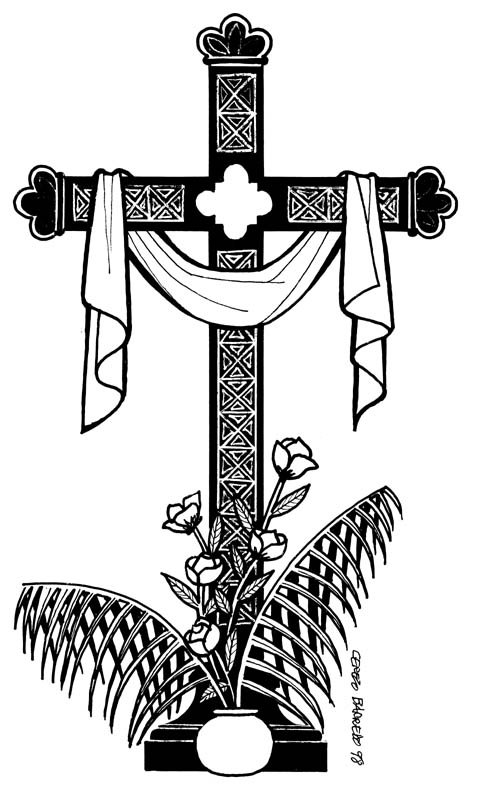EXALTATION OF THE CROSS
AN OFTEN MISUNDERSTOOD SYMBOL
The crucifix is a symbol with which Christians manifest their faith, yet for three centuries it was intentionally not used. Believers recognised themselves as such in other symbols - the anchor, the fish, the bread, the dove, the shepherd - but shied away from recognising the cross as a symbol because it evoked the infamous death of their Master, a death reserved for slaves and bandits, and was also one of the reasons why pagans mocked Christians.
 Around 180 A.D. the polemicist Celsus - who was well acquainted with mythological stories in which the gods always appeared in splendour and radiance - objected to the Christians: 'If the spirit of God had been incarnated in a man, it was necessary that he should at least excel all others by his bodily beauty, his strength, his majesty, his voice and his eloquence. Jesus, on the other hand, had nothing extraordinary to distinguish him from the others. He has appeared as an inveterate wanderer; he has been seen, astonished and disoriented, wandering through the country in the midst of publicans and disreputable sailors. We know how he ended, we know the betrayal of his own, the condemnation, the torture, the outrages, the sufferings of his torture... and that cry he uttered from the top of the scaffold as he was dying'.
Around 180 A.D. the polemicist Celsus - who was well acquainted with mythological stories in which the gods always appeared in splendour and radiance - objected to the Christians: 'If the spirit of God had been incarnated in a man, it was necessary that he should at least excel all others by his bodily beauty, his strength, his majesty, his voice and his eloquence. Jesus, on the other hand, had nothing extraordinary to distinguish him from the others. He has appeared as an inveterate wanderer; he has been seen, astonished and disoriented, wandering through the country in the midst of publicans and disreputable sailors. We know how he ended, we know the betrayal of his own, the condemnation, the torture, the outrages, the sufferings of his torture... and that cry he uttered from the top of the scaffold as he was dying'.
The graffito found in the Palatine school where the pages who served at the emperor's court were educated is famous. It dates from 200 AD and depicts a young man in the act of venerating a crucified man with the head of an ass; the inscription reads: 'Alexamenos worships his God', an obvious caricature of Christian worship probably engraved by a slave trying to mock a fellow convert to the new faith.
"We proclaim a crucified Christ, a stumbling block to the Jews, foolishness to the pagans", Paul had written (1 Cor 1:23). But the Christians were reluctant to translate this truth into a symbol.
A precise date marks the transition to the cult of the cross: 14 September 335 AD, the day on which a great crowd of pilgrims from all parts of the Roman Empire gathered in Jerusalem to celebrate the feast of the dedication of the Basilica built by Constantine on the site of the Holy Sepulchre. On the rock of Calvary the emperor had had a marvellous cross inlaid with precious stones placed to commemorate the place of Christ's sacrifice.
From that day on, the cross became the Christian symbol par excellence; it began to be made of more noble metals, inlaid with precious pearls; it began to appear everywhere: on churches, on banners, on the prince's helmet, on coins. Over the centuries, unfortunately, from an emblem of love and a sign of the rejection of all violence, it sometimes became a banner to impose by force the 'political' rights of God and was often reduced to an amulet, a necklace, a magic object.
Today's feast wants to bring us back to the true meaning of the cross. For 17 centuries Christian communities have venerated and loved this symbol, but not idolised it, aware that what makes a society Christian is not the display of crucifixes, but the life of Christians, 'crucified' and persecuted because they refuse to worship money and power, becoming, on the contrary, builders of peace.
- To internalise the message, we will repeat: That whoever meets a Christian may always see in him the Crucified One ready to give his own life.


 Votes : 0
Votes : 0









